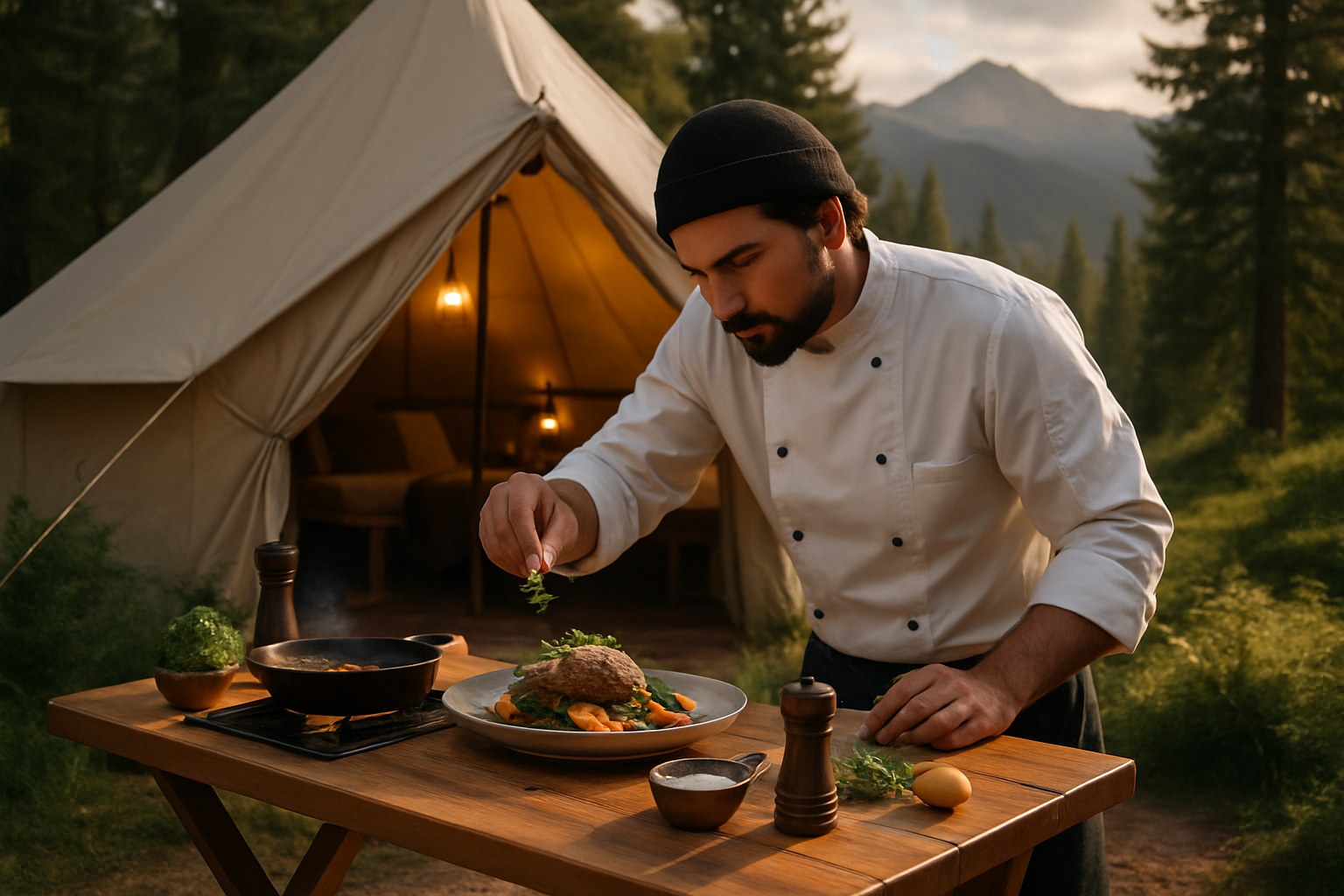Exploring the Rise of Culinary Foraging Adventures
Embark on a gastronomic journey that takes you deep into nature's pantry. Culinary foraging adventures are reshaping the way travelers experience local cuisines and connect with the environment. This emerging trend combines the thrill of exploration with the satisfaction of sourcing your own ingredients, offering a unique perspective on sustainable dining and regional flavors.

The concept of foraging tours began to gain traction in the early 2010s, primarily in Nordic countries where the practice of allemansrätten, or the right to roam, allowed for easy access to wild areas. Pioneering chefs like René Redzepi of Noma in Copenhagen put foraging on the global culinary map, inspiring travelers to seek out similar experiences in various parts of the world.
The Appeal of Culinary Foraging Adventures
Culinary foraging adventures offer a multi-faceted experience that appeals to a wide range of travelers. For food enthusiasts, it provides an opportunity to discover flavors that are truly unique to a specific location and season. Nature lovers appreciate the chance to deepen their understanding of local ecosystems and biodiversity. Additionally, the hands-on aspect of foraging satisfies the growing desire for immersive, authentic travel experiences.
These adventures often combine elements of hiking, botany, and cooking, creating a well-rounded outdoor activity that engages all the senses. Participants learn to identify edible plants, mushrooms, and sometimes even insects, under the guidance of expert foragers or chefs. The experience culminates in preparing and enjoying a meal with the foraged ingredients, often complemented by locally-sourced meats or fish.
Destinations Leading the Foraging Tourism Trend
While foraging adventures can be found in many parts of the world, certain destinations have emerged as leaders in this niche travel sector:
Scandinavian Countries
Norway, Sweden, and Denmark continue to be at the forefront of the foraging movement. The region’s pristine forests and coastlines offer a diverse array of edible plants, berries, and mushrooms. Many high-end restaurants and hotels now offer foraging expeditions as part of their culinary programs.
Pacific Northwest, USA
The lush forests of Oregon and Washington state provide an ideal setting for foraging adventures. Travelers can hunt for prized ingredients like chanterelle mushrooms, wild berries, and edible flowers. Coastal areas also offer opportunities to forage for seaweed and shellfish.
Japan
With its long history of incorporating wild plants into traditional cuisine, Japan offers unique foraging experiences. Mountain villages often provide guided tours to collect sansai (mountain vegetables), while coastal areas are known for seaweed foraging.
New Zealand
The country’s diverse landscapes, from coastlines to alpine regions, make it a forager’s paradise. Many Maori-led tours combine foraging with cultural education, offering insights into traditional uses of native plants.
The Impact on Local Communities and Ecosystems
As culinary foraging adventures gain popularity, they bring both opportunities and challenges to local communities and ecosystems. On the positive side, these tours can provide economic benefits to rural areas and promote conservation efforts by highlighting the value of intact ecosystems.
However, there are concerns about the potential negative impacts of increased foraging activity. Over-harvesting of popular species, trampling of sensitive habitats, and the introduction of invasive species are all potential risks that need to be carefully managed.
Responsible tour operators are addressing these concerns by implementing strict guidelines for sustainable foraging practices. This includes limiting group sizes, rotating foraging areas, and educating participants about conservation principles.
The Future of Culinary Foraging Adventures
As travelers continue to seek out unique, sustainable, and educational experiences, culinary foraging adventures are likely to grow in popularity. The trend is evolving to include more specialized offerings, such as foraging-focused wellness retreats and multi-day expeditions that combine foraging with other outdoor activities.
Technology is also playing a role in shaping the future of foraging tourism. Mobile apps that help identify edible plants are making it easier for novice foragers to explore safely, while virtual reality experiences are allowing armchair travelers to get a taste of foraging adventures from home.
Essential Tips for Aspiring Foraging Adventurers
• Always join guided tours led by certified experts when foraging in unfamiliar areas
• Learn to identify poisonous look-alikes before attempting to forage on your own
• Respect local regulations and obtain necessary permits for foraging activities
• Practice the 1/3 rule: harvest no more than one-third of any plant population
• Bring appropriate gear, including a good field guide, collection basket, and proper footwear
• Be mindful of your impact on the environment and follow Leave No Trace principles
• Consider taking a wilderness first aid course before embarking on remote foraging expeditions
Culinary foraging adventures represent a fascinating intersection of sustainable travel, gastronomy, and environmental education. As this trend continues to evolve, it offers travelers a unique way to connect with nature, explore local cultures, and expand their culinary horizons. By embracing responsible practices, foraging tourism has the potential to foster a deeper appreciation for the natural world and promote more sustainable approaches to food and travel.





